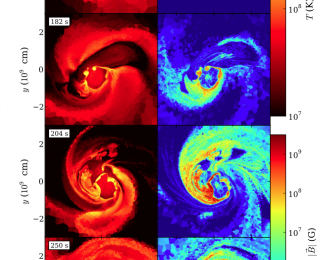
by Josh Fuchs | May 20, 2015 | Daily Paper Summaries
White dwarfs in a binary often merge into a variety of interesting phenomena. However, nobody has sought to understand the role that magnetic fields play during the merger. The authors simulate the merging of two white dwarfs with magnetic fields to see what happens.

by Josh Fuchs | Dec 13, 2014 | Quick Notes
Want to figure out what to get your favorite astronomer for the holidays? Astrobites has a number of suggestions!

by Josh Fuchs | Oct 28, 2014 | Daily Paper Summaries
How do the most massive stars explode? A new model of massive stars predicts new observational evidence.

by Josh Fuchs | Sep 30, 2014 | Daily Paper Summaries
How well do the current methods of measuring the star formation rate of galaxies match then known star formation rate in simulations?

by Josh Fuchs | Sep 2, 2014 | Daily Paper Summaries
The Pleiades is one of the most well-known open clusters visible with the naked eye from Earth. But just how far away is the cluster? New results help determine a more accurate distance and suggest a troubling error in a previous study.





